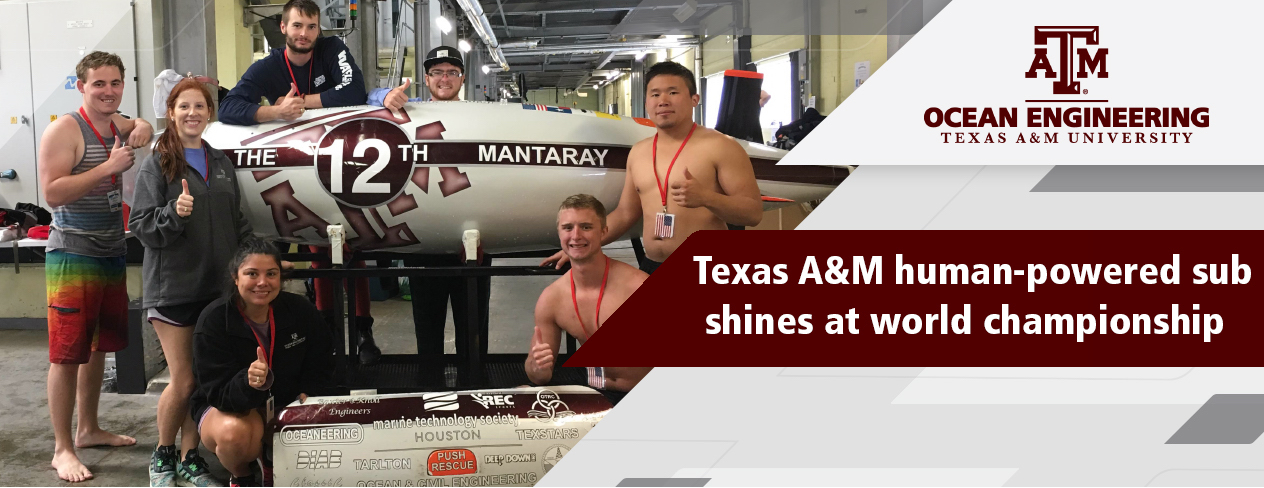
The 12th Mantaray team (from left to right): Jake Taylor, McKenzie Griffith, Martina Garcia, Aaron Rambo, Jose Lacal, Ben Torrison and Kevin Ariyanonthaka
The 12th Mantaray, Texas A&M University’s human-powered submarine, completed eight out of 15 attempts with a top speed of 4.4 knots at the 2016 European International Submarine Races (EISR) at the QinetiQ Ocean Basin in Gosport, England. Based on speed, it was the fourth fastest submarine out of the 11 subs in the competition.
The 12th Mantaray also received the QinetiQ Prize for the most dramatic event when the submarine went from being horizontal to vertical, but the student piloting the sub was able to recover and complete the race.
The races involved teams of university students who design, build, test and race human-powered submarines around a slalom course. The basic design and build process of the submarine consisted of five components: hull, propulsion, transmission, pilot safety and ergonomics, and control. This year teams from the United States, New Zealand, the Netherlands, Denmark, Canada and the United Kingdom competed in the races.
Texas A&M’s team was made up of Kevin Ariyanonthaka (pilot), Martina Garcia (co-team leader), Ben Torsion (co-team leader), Jake Taylor, McKenzie Griffith, Aaron Rambo and Jose Lacal. Earlier this year, it was the first team to officially qualify for the races.
Ariyanonthaka was the sole source of propulsion for the submarine as he pedaled the fully submerged submarine wearing scuba gear.
“The turns and slalom gates at the races presented a new challenge for the team, especially the pilot,” said Dr. Robert Randall, W. H. Bauer Professor in Dredging Engineering in the Department of Ocean Engineering. “Kevin did an outstanding job and that is not possible without the support from everyone on the team.”
Since 1991, ocean engineering students have participated in the human-powered submarine races. The students have built both two-person and one-person submarines, powered by SCUBA certified student drivers.
The Texas A&M team was sponsored by the Houston Chapter of the Marine Technology Society, Texas Section of the Society of Naval Architects and Marine Engineers, Baumann Propellers, Oceaneering, Baxter and Knoll, Great Lakes Dredge and Dock, McClure and Associates, InterMoor, Deep Down, Classic Collision and Restoration, TASCO Auto Color, Machine Works, DIAB, DUNA, Department of Ocean Engineering, the Texas A&M Engineering Experiment Station Offshore Technology Research Center, and the Haynes Coastal Engineering Laboratory.